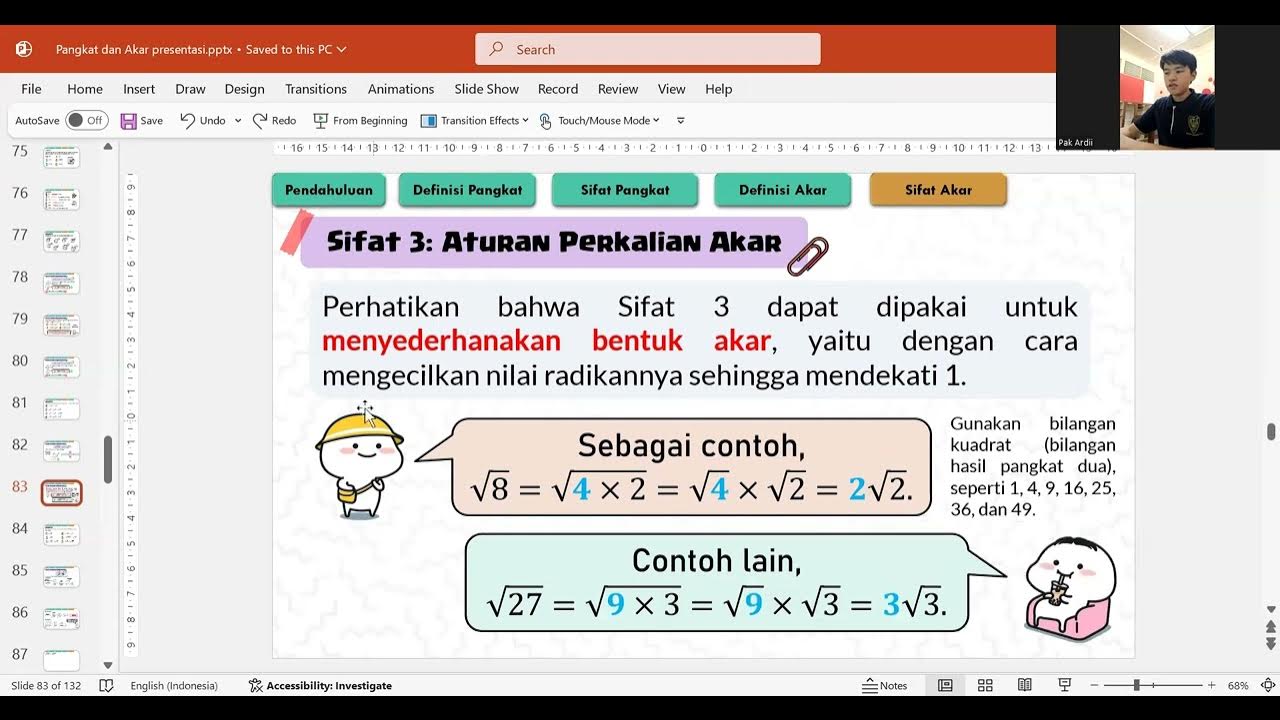PROPRIEDADES DOS RADICAIS EM 7 MINUTOS
Summary
TLDRIn this video, the instructor explains five key properties of radicals, offering practical tips and examples to help students understand how to simplify and compare different types of roots. The lesson covers how to factor and simplify radicals, compare roots with different indices, and handle square roots and cube roots of products and quotients. The teacher emphasizes breaking down complex problems into manageable steps, using properties like the least common multiple for comparison, and provides helpful ‘bizus’ to make the process easier and faster.
Takeaways
- 😀 The cube root of a negative number exists and is negative. For example, √[3]{-1000} = -10.
- 😀 The second property of radicals involves comparing roots with different indices by adjusting them to have a common exponent using the least common multiple (LCM).
- 😀 To compare √[3]{11} and √{5}, we find the LCM of their indices and adjust both expressions to have the same exponent before comparing their values.
- 😀 When simplifying cube roots of products, you can separate the terms and simplify each factor individually. For example, √[3]{8 * x^6 * y^5} becomes 2 * x^2 * y.
- 😀 Radicals with the same base can be simplified by adding or subtracting the exponents. For example, √[5]{32} * a^7 simplifies using the same base and exponent rules.
- 😀 For simplifying the root of a ratio, apply the root to both the numerator and the denominator separately, such as √{49/7} = √{49} / √{7}.
- 😀 The cube root of a product like √[3]{2 * 5} equals √[3]{10}, showing how multiplication inside the root works.
- 😀 The properties of radicals also apply when simplifying expressions involving products and divisions inside the root. For example, √{16 * 4} simplifies as √{16} * √{4}.
- 😀 By factoring terms inside the radical, like √[3]{8 * x^6}, you can simplify the expression to its most basic components.
- 😀 Understanding the properties of radicals allows for faster simplification of more complex expressions, especially when dealing with large exponents or mixed indices.
Please replace the link and try again.
Outlines

This section is available to paid users only. Please upgrade to access this part.
Upgrade NowMindmap

This section is available to paid users only. Please upgrade to access this part.
Upgrade NowKeywords

This section is available to paid users only. Please upgrade to access this part.
Upgrade NowHighlights

This section is available to paid users only. Please upgrade to access this part.
Upgrade NowTranscripts

This section is available to paid users only. Please upgrade to access this part.
Upgrade NowBrowse More Related Video

4 Laws of Radicals: Grade 9 Quarter 2

BENTUK AKAR DAN SIFAT-SIFATNYA - MATEMATIKA PEMINATAN KELAS X SMA

DIVIDING RADICALS | GRADE 9 @MathTeacherGon

Pangkat dan Akar | Sifat 4: Aturan Pembagian Akar

Measure of Central Tendency - What? Why? How? || Mean || Median || Mode || Statistics for Beginners

MATRIZES | DESTRAVE EM 10 MINUTOS
5.0 / 5 (0 votes)